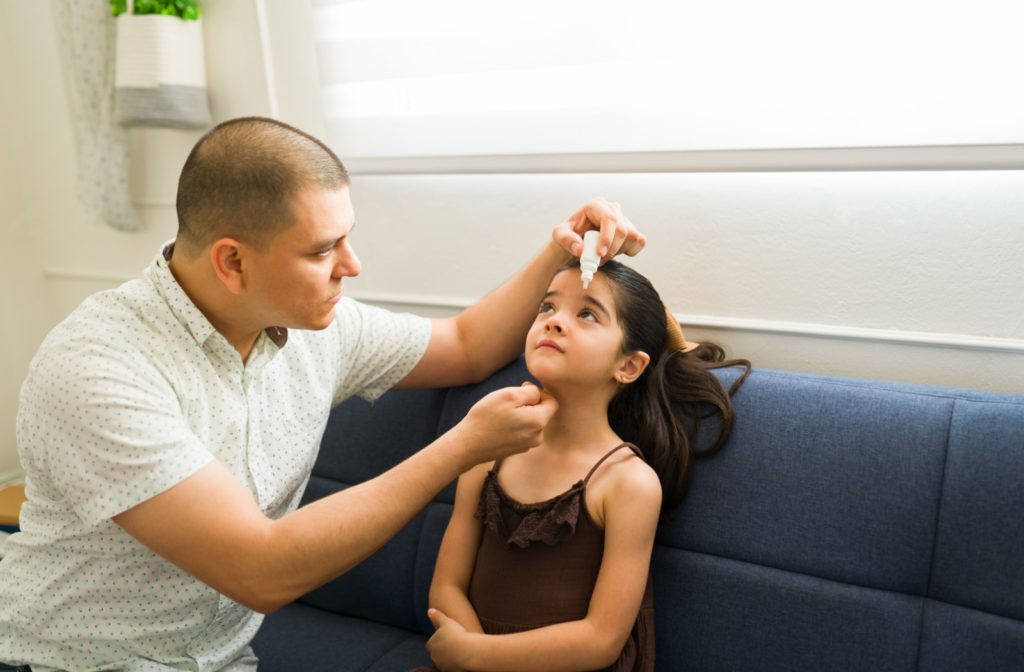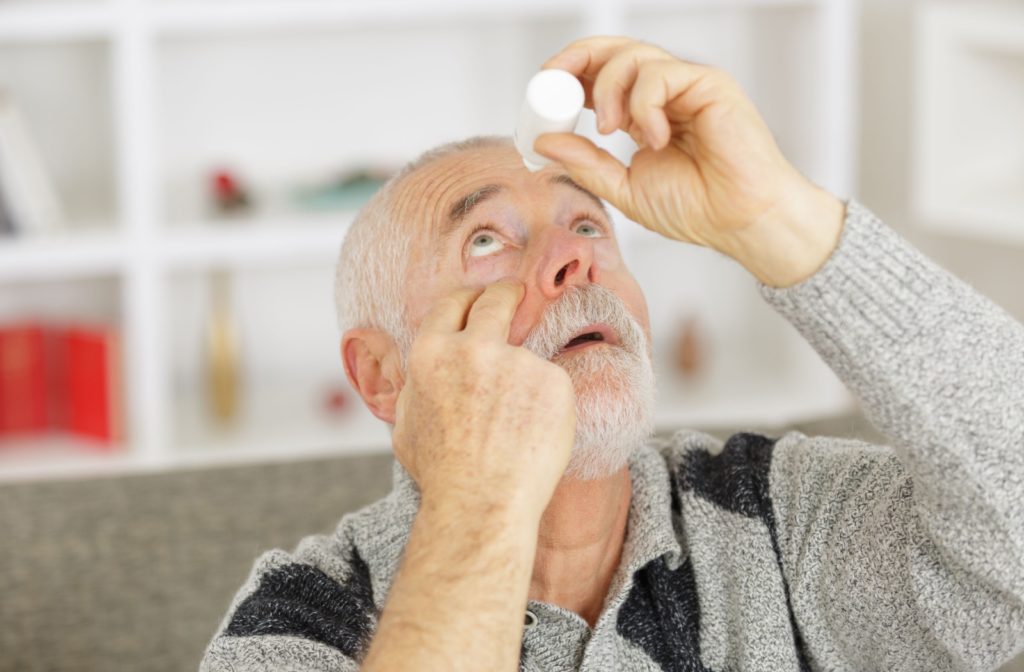Eye drops are popular, convenient remedies for eye concerns like dryness and redness, but applying too much can create unexpected problems for your eye health over time.
Overusing eye drops can cause:
- Rebound redness
- Increased dryness
- Irritation and allergic reactions
- Blurry vision
- Long-term health concerns
Additionally, using the wrong type of eye drops can prove ineffective and increase your risk of developing other eye concerns. A comprehensive eye exam can assess your eye health and help determine which eye drops can suit your needs. You should always follow the manufacturer’s instructions or your eye doctor’s personal guidance.
What Are Eye Drops For?
Many people use eye drops to deliver much-needed hydration or medication directly to the eye. Eye drops can help address concerns like:
- Dryness
- Redness
- Allergies
- Eye conditions
How Often Should You Be Using Eye Drops?
Many over-the-counter eye drops recommend 1 to 2 drops per eye, but this depends on the manufacturer. Make sure to read the directions carefully before using them.
You should also make sure you’re using the right type of eye drops for your specific concern. If you’re unsure, consult your eye doctor.
If you’re using medicated eye drops, follow your eye doctor’s instructions and stick to the prescribed dosage and frequency.
When eye drops prove ineffective, applying more won’t necessarily yield better results. Using too much can overwhelm your tear film. Talk to your optometrist if your current eye drops aren’t providing you relief. They can work with you to determine a suitable option.

The Risks of Overusing Eye Drops
It’s easy to assume eye drops are harmless, but using too much or applying them too frequently may create a cascade of side effects.
Rebound Redness
Some “red-eye” relief drops contain vasoconstrictors, which temporarily shrink blood vessels to reduce redness. Overusing these drops can cause rebound redness, where your eyes become even redder when the effect wears off.
Increased Dry Eye Symptoms
Your eyes rely on a delicate tear film for protection and hydration. Over-applying artificial tears can dilute or disrupt this natural barrier, leaving your eyes more susceptible to dryness and infection.
Dry eye symptoms include:
- Redness and wateriness
- Stinging and burning sensations
- Gritty and scratchy sensations
Irritation & Allergic Reactions
Overuse of eye drops, especially ones with preservatives, can lead to irritation, allergic reactions, or even toxicity. Eye irritation can lead to further eye concerns, like sensitivity to light and corneal abrasions.
Blurry Vision
Using too many drops at once can overwhelm your eyes with liquid, leading to temporary blurry vision. This can usually resolve itself after a few minutes, but it can be uncomfortable, and you may have trouble performing regular tasks for a while.
Health Concerns with Medicated Drops
Overusing medicated eye drops can pose severe risks, leading to complications such as:
- Improper absorption
- Eye pressure imbalances
- Systemic side effects
How to Use Eye Drops Properly
Applying eye drops correctly is simple once you understand the steps. Here are tips to ensure you’re getting the most out of your eye drops while avoiding overuse.
- Wash your hands. Always start with clean hands to prevent introducing bacteria to your eyes.
- Follow the instructions. Stick to the dosage recommended on the label or by your doctor, and never assume “more is better”
- Tilt your head back. Look up and gently pull down your lower eyelid to create a pocket where you can apply the drop.
- One drop is usually enough. Your eye can typically only hold one drop at a time—applying more will not enhance the effect.
- Close your eyes. After applying the drop, gently close your eyes and avoid blinking to prevent washing the drop away.
- Wait between drops. If using more than one type of drop, wait a few minutes between applications so each one can be absorbed properly
- Store them correctly. Keep the bottle in a cool, dry place and always check expiration dates to ensure they’re still safe to use
Discuss Your Eye Drop Use with Your Optometrist
Eye drops can be a lifesaver, but too much of a good thing can still be harmful. Sticking to the recommended dosage is crucial to tackle dryness, redness, or allergies.
Eye care should never be complicated. If you need clarification on how often or how much of a particular eye drop you should use, contact Total Vision La Mesa today and book an appointment. One of our experienced eye doctors can discuss your needs with you and recommend the right drops and frequency.



